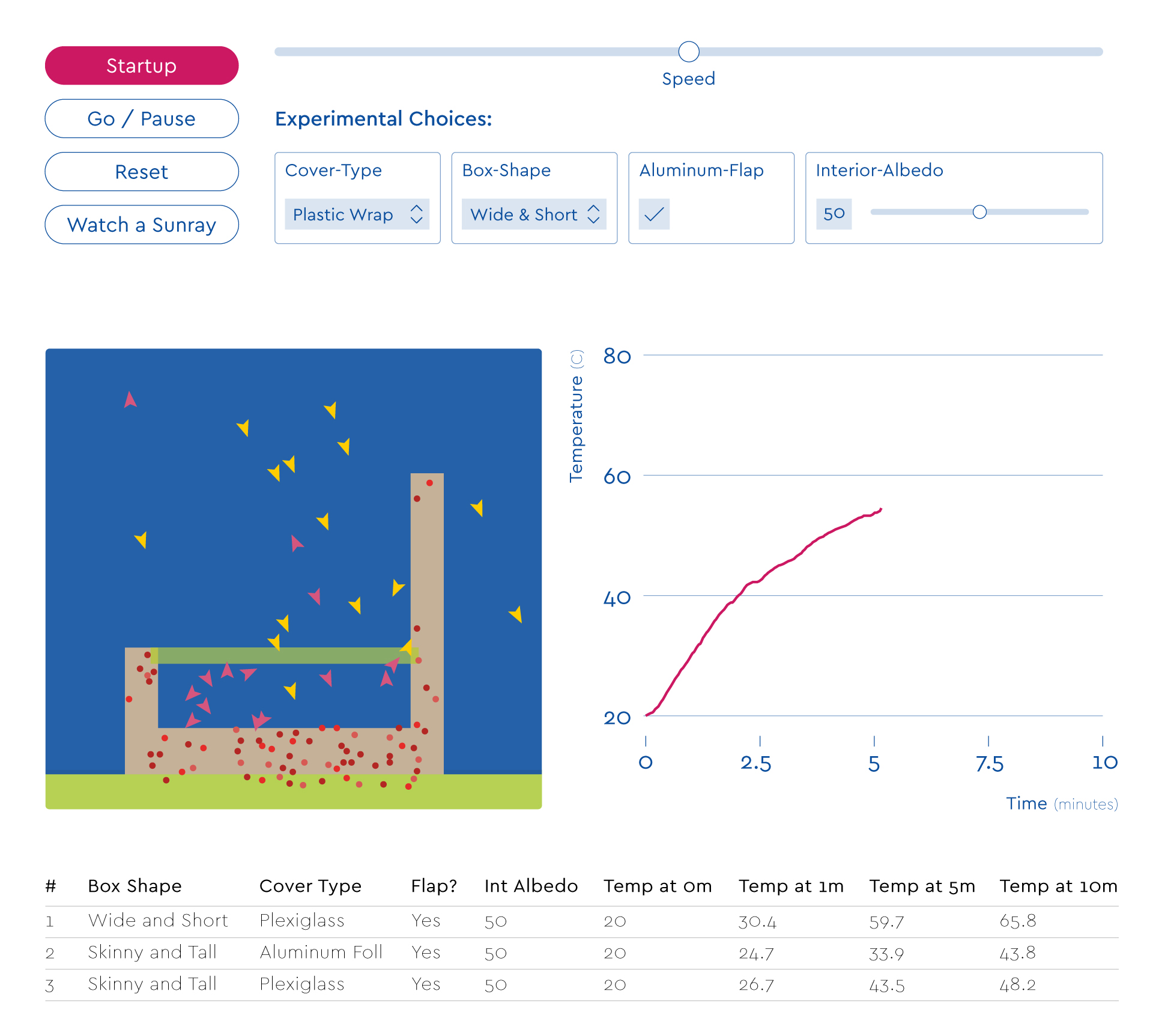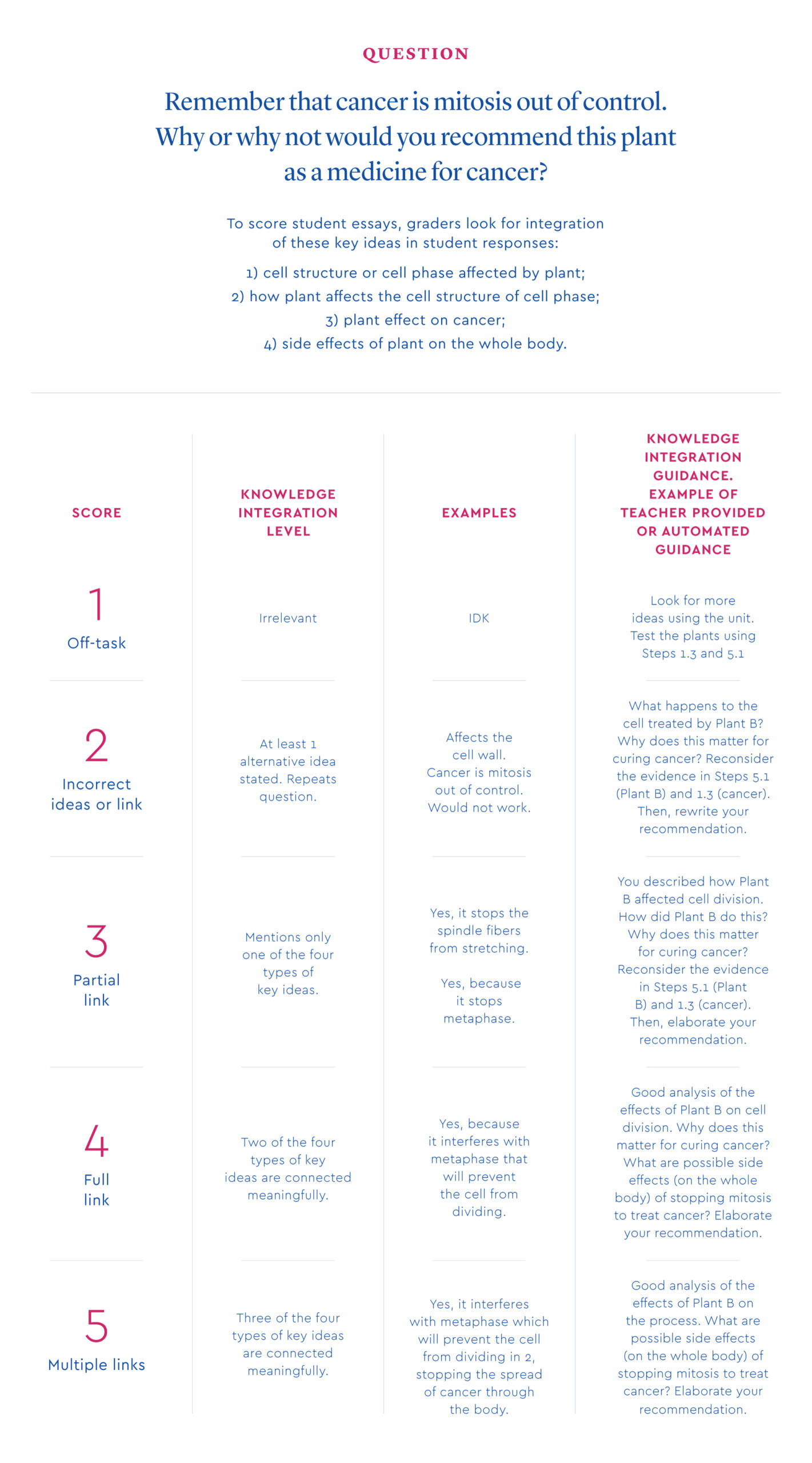
Technology
For The Future of Education
Technology Matters
February 09, 2021
Self-directed learning often demands that the learner interpret conflicting information, seek clarification, and make informed decisions about personal dilemmas. How can technology help students develop the knowledge and skills to self-direct their learning throughout life?
Preparing people to be effective lifelong learners is a significant challenge of the twenty-first century, characterized, as it is, by constant and rapid change. The level and pace of change can render specific insights and skills obsolete, challenging people to repeatedly refine their knowledge in new scenarios and with new tools. Adaptation to new contexts necessitates sustained lifelong learning. Yet, many education systems struggle to enable students to become effective lifelong learners (Marope, Griffin, and Gallagher, 2017).
By Marcia C. Linn, Elizabeth McBride, Libby Gerard, Ady Kidron
09/02/ 2021
·
- Share
Guiding students to become self-directed lifelong learners is often overlooked in education, where the emphasis instead focuses on covering all of the information that experts think students need to learn. Yet, what is learned at school or college can easily become outdated. Preparing students to respond and adapt their knowledge to new information is essential in the fast-changing twenty-first century context (Marope, Griffin, and Gallagher, 2017). Rather than learning by rote, students need opportunities to test and refine their ideas. Even when students conduct hands-on investigations, curricular materials may emphasize following directions rather than using evidence to inform their own decisions. Instead of following instructions or memorizing information, students need to generate conjectures and formulate methods to test their ideas. Emerging technologies remain an under-utilized resource in self-directed learning.
Fostering self-directed learning through science
Science courses illustrate how teachers can use technology to foster and reinforce effective self-directed lifelong learning. Scientists are frequently required to resolve conflicts between different findings, and science courses that emulate this practice are ideal for building capacity for self-directed learning. This good practice can inform the transformation of courses in most disciplines, fostering self-directed lifelong learning as a core, global, future competence (Marope, Griffin, and Gallagher, 2017).
Self-directed science students test their ideas by seeking new information and by revising their ideas based on that information. Because the internet makes both valid and invalid information readily available to users, it is more important than ever to teach students to investigate the ideas they encounter and assess whether they are credible and relevant to the task at hand.
To engage students and facilitate self-directed learning, instruction featuring interactive models and simulations can bring real-world dilemmas to life in the science classroom. Two examples, developed in the Web-based Inquiry Science Environment (WISE: http://WISE.Berkeley.edu), illustrate this opportunity. First, students explore how different treatment options for cancer can disrupt mitosis. Second, students design a solar oven to gain insight into how solar energy can contribute to energy-efficient home heating. Helping students engage in self-directed learning using technology entails multiple challenges. To meet these, WISE has been tested and improved by over 20,000 teachers and their students in Europe, Asia, Australia, Africa, North America, and South America.
In the WISE mitosis unit, students are guided to explore how fictitious plant-based drugs disrupt mitosis to treat cancer (Gerard, Ryoo, McElhaney, Liu, Rafferty, and Linn, 2015). Students use an interactive model to test how the drugs affect mitosis, and then interpret graphs showing how well they treat cancer. At first, when students use this unit, they are unsure how to proceed. When asked what aspect of mitosis a cancer drug should target, many responded, “I don’t know”. Others gave vague answers.
In the solar ovens unit, students design, build, and test their own solar oven, guided by WISE activities. Rather than planning their designs using the relevant science principles, students often rush to create their ovens. When they rush through the design process, they tend to make decisions based on intuition rather than scientific evidence. For example, many students cover the opening of the oven with aluminum foil instead of clear plastic because they think metals attract energy.
To emulate the scientific method, the pedagogical processes implemented in WISE have been designed to motivate students to revise their initial essays and designs after discovering new evidence. This worked for some students in the two units. However, many students did not revise their essays or designs, or made only superficial changes (e.g., adding a word, improving punctuation, taping a small hole in a solar oven). To optimize the role of teachers and technology to guide students’ essay (Gerard, Ryoo, McElhaney, Liu, Rafferty, and Linn, 2015) and design (McBride, Vitale, Applebaum, and Linn, 2016) revisions, insights are drawn from knowledge integration (Linn and Eylon, 2011). Knowledge integration guidance for revision encourages students to discover new ideas and modify their initial essay or design to fill gaps, resolve inconsistencies with evidence, and strengthen connections.
Combining teachers and technology to promote self-directed learning
Teachers reinforce technology in guiding students to become self-directed learners. Teaching and technology can promote self-directed learning in a symbiotic relationship that values the diverse array of ideas which learners acquire from their collective experiences (both inside and outside of the classroom). Extensive evidence suggests that learners grapple with multiple, conflicting and often confusing ideas about scientific phenomena. For example, students designing solar ovens may argue that metal attracts heat while also arguing that metals reflect the sun. Teachers and technology can elicit these ideas, so they can be used as productive starting points for students to test and revise their ideas, and to develop lifelong learning competence. For example, prompting students to articulate their existing ideas by making predictions or brainstorming ensures that these initial ideas are examined and refined as students learn new ideas.
WISE activities featuring experiments, models or simulations can strengthen this process by enabling students to add new scientific ideas. Technology can help students build a repertoire of ideas by offering carefully designed activities. Using a solar oven model (see Figure 1), for example, students can compare the effect of lining their oven with foil or black paper and add ideas about whether materials reflect or absorb light energy.
Teachers can facilitate this process by guiding students to extract new insights from their interactions with the technology. By helping their students to develop coherent ways to evaluate the scientific ideas they encounter and compare these with their own initial ideas, teachers can reward self-directed learning. And, by comparing alternative designs, students can distinguish between their own ideas and new ones.
WISE activities encourage students to write essays in order to reflect on the evidence and to revisit their own initial ideas to consolidate their experiences. Teachers and the technology can guide students to analyse their repertoire of ideas and to iteratively revise their essays.
Students gain practice in self-directed learning by articulating their own ideas; building a repertoire that combines their own ideas and ideas from simulations, experiments or models; distinguishing among the ideas in the repertoire; and reflecting on the resulting insights. Guiding students to use these four learning processes in combination promotes coherent understanding and enables lifelong learning. These processes are based on studies of how students think about, refine, compare, and integrate their diverse repertoire of ideas (Linn and Eylon 2011). This process of eliciting ideas, discovering new ideas using evidence from experiments, models, or simulations, distinguishing among the ideas, and reflecting on the results enables students to integrate their ideas rather than continuing to accumulate disconnected or disjointed ideas. Students can revise and reformulate their views as they encounter new evidence throughout life.

Instruction featuring interactive models and simulations can bring real-world dilemmas to life in the science classroom. Personalized guidance demonstrates respect for each student’s ideas about a science topic and promotes refinement over memorization.
Evaluating and revising ideas for self-directed learning
In both the mitosis and solar oven examples, students experienced challenges in switching from textbook or teacher-directed learning to self-directed learning. Many students were initially unsure about how to revise their essays or designs or how to use virtual models to test their understanding of a topic. Teachers can guide students to revise their essays by building on the evidence they collect. For example, in the mitosis unit, students were asked to use a model to explain how mitosis gets out of control. They explored the role of the cell wall in mitosis and cancer treatment. Teachers promoted self-directed learning by evaluating student essays using a rubric that rewards knowledge integration. The teachers guided students to improve their essays by helping them locate relevant evidence and use it to critique their response (see essay, scoring rubric, and guidance in Table 1). Guidance on how to use evidence to strengthen their response helped students to integrate their ideas (Gerard, Ryoo, McElhaney, Liu, Rafferty, and Linn, 2015).
Analysis of audio recordings from teacher–student interactions highlighted ways in which teachers use the computer-generated knowledge integration guidance as a starting point to strengthen students’ revisions of their ideas (see Figure 2).
Effective uses of technology to log student actions supported teachers in guiding revision. For example, teachers appreciated alerts that used logged data to show which students responded with vague ideas when asked which plant is a candidate for a cancer drug. This helped teachers to identify in real time which students needed additional teacher support and which could continue to investigate on their own. In addition, algorithms were used to analyse how each student revised in response to computer and/or teacher guidance. This helped teachers to reflect on the impact of the guidance and refine their own approach.
Furthermore, teachers can use WISE technologies, such as interactive virtual models, to help students develop and answer their own questions. Teachers can guide students to revisit the model instead of telling them the right answer. Thus, teachers can use guidance to help students practice self-directed learning.
In one study, the teacher’s personalization of the computer guidance significantly increased the number of students who revised (96% of the students in the class) and the quality of their revisions compared to when they used the computer guidance alone (Gerard, Ryoo, McElhaney, Liu, Rafferty, and Linn, 2015). For students who needed evidence, the teacher prompted them to consider a new idea and directed them to the model. For students who needed to distinguish between the ideas in their explanation, the teacher asked them to elaborate and add details. By personalizing guidance for revision, the teacher helped all students to develop strategies to revise their ideas. She also fostered a process of self-directed learning by asking questions rather than telling answers.
Students in the WISE solar ovens unit could interact with a virtual model of a solar oven to connect their design-and-redesign process with science principles (Figure 1). This model made some of the mechanisms behind effective solar ovens visible. For example, it showed how solar radiation from the sun is transformed into heat energy. Using the virtual model, students could compare an oven covered with foil to other oven designs, in order to revise their original design (McBride, Vitale, Applebaum, and Linn, 2016).
A classroom study compared how well students learned when they used the model to plan or to redesign (McBride, Vitale, Applebaum, and Linn, 2016). In the planning condition, students used the virtual model to generate alternative ideas and test them. In the redesign condition, students used the virtual model to test possible revisions to their physical model. Students were randomly assigned to the planning condition or to the redesign condition. Students in the planning condition became proficient at directing their own experimentation. They tested ideas and connected their tests to the underlying science principles. In contrast, the redesign condition primarily motivated students to use the virtual model to test the oven they had just designed.
Conclusions
In the effort to ensure that students acquire all the disciplinary knowledge and practices deemed essential for dealing with contemporary problems, their preparation to become lifelong learners is often overlooked. By combining the knowledge-integration pedagogical framework with powerful technologies and teacher guidance, students can be set on a path to become effective self-directed lifelong learners. Bringing teachers and technology together can give students a firm foundation for developing a coherent understanding of new topics they encounter in life by drawing on evidence from multiple sources. WISE has potential to guide teacher professional development programmes in how to use students’ work to refine instruction, enabling teachers to self-direct their learning about students’ ideas and pedagogical choices.
This article is based on work supported by the National Science Foundation under grant numbers 1451604 and DRL-1418423. Any opinions, findings, conclusions or recommendations expressed in this material are those of the authors and do not necessarily reflect the views of the National Science Foundation.


